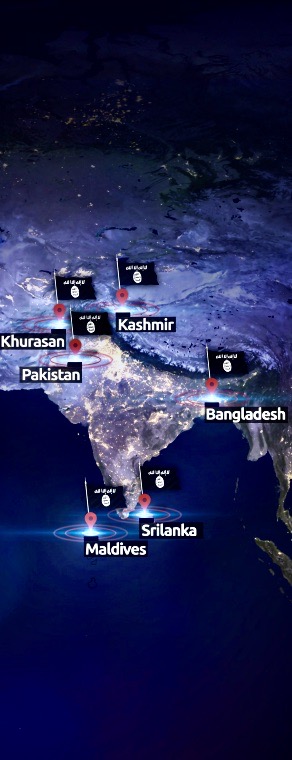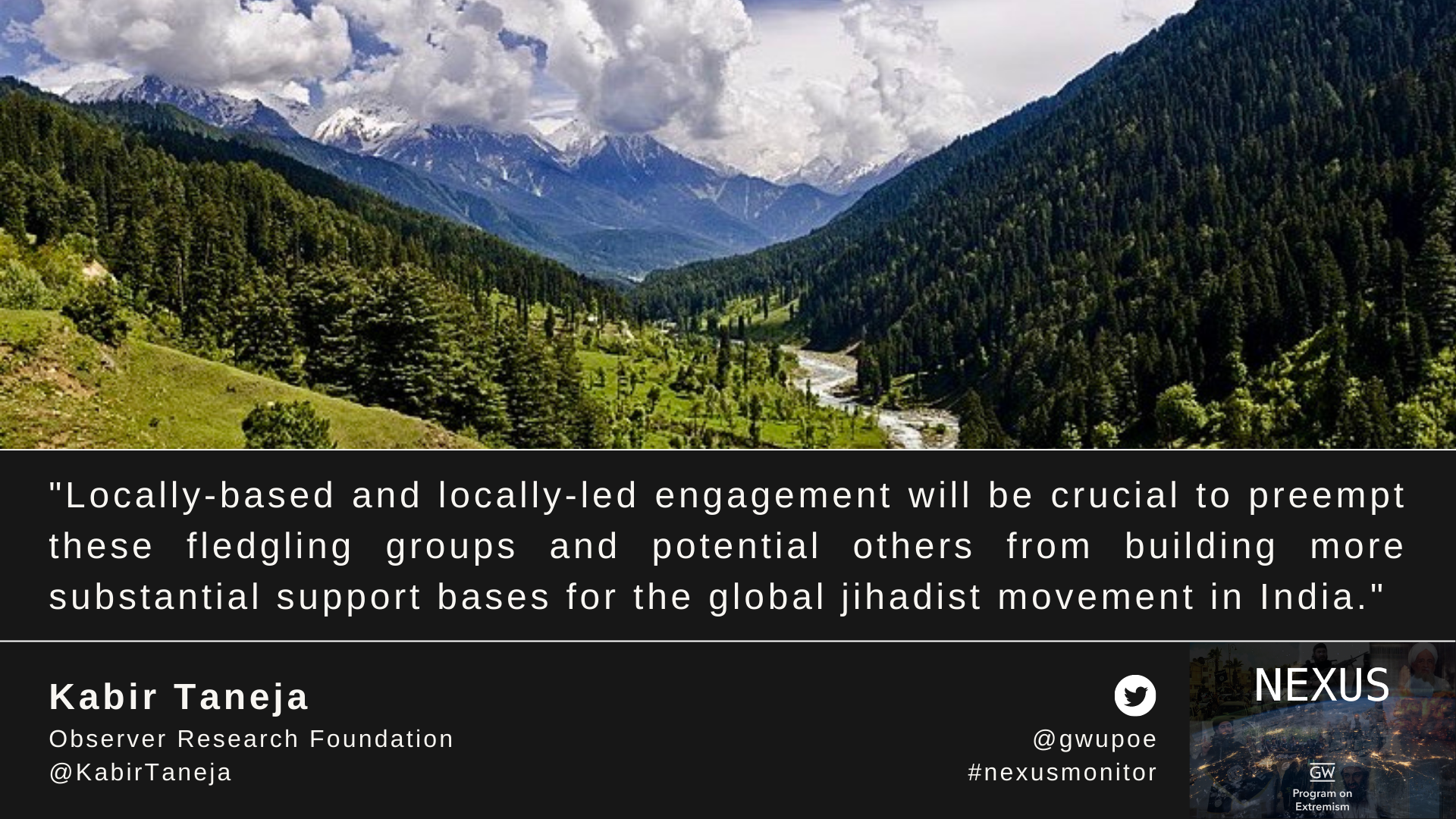BY AUGUST 2022, the fall of Afghanistan back into the hands of the Taliban has for many been destined to the annals of history. However, even as Western interests continue shifting towards great power competition—including by addressing Russia’s war against Ukraine and developing strategic and tactical capacities in the Indo-Pacific to counter a bourgeoning China—Afghanistan today is a regional crisis that demands regional solutions.
The Taliban’s return to power is not only a tactical challenge in South and Central Asia, but also opens Afghanistan once again to divergences between regional countries in South, Central, and West Asia. Many of these countries have different interests both in Afghanistan and within the Taliban’s hierarchies based on strategic, ethnic, ideological, and historical issues. While many debates in the international arena concentrate on how to deal with the Taliban going forward—particularly with regards to sanctions compliance—equal attention must be applied to how the Taliban navigates these competing regional dynamics.
One of the most prominent and longstanding axes of competition that only looks set to intensify is between Pakistan and India. In recent months, China and Pakistan’s aims to incorporate Afghanistan under Taliban patronage into their China-Pakistan Economic Corridor (CPEC, which also invests in Pakistan-occupied parts of Kashmir) garnered a strong response from New Delhi, which called any such plans “illegal and unacceptable”. India’s consternation should come as no surprise; Pakistan’s support for the Taliban is well documented, and the movement’s two-decade insurgency in Afghanistan was often one that Rawalpindi used as leverage against both Indian and Western interests alike. Pakistan always viewed India’s overarching presence in Kabul as a grave concern from a geostrategic point of view, wherein Pakistan sought to develop ‘strategic depth’ in Afghanistan to counter Indian interests—a concept devised and marketed largely by the Pakistani security establishment for its own consumption—and counteract Afghan leadership in Kabul that looked at India favorably. The Taliban’s return to power and the collapse of the former government was undoubtedly a significant blow to New Delhi’s interests, and one that it has since shifted to address.
But beyond this new era of strategic competition in the region, India indeed faces serious security challenges with the return to power of the Taliban. Near the top of the list is the Islamic State Khorasan Province (ISKP)—the Islamic State movement’s regional affiliate—which continues to try to exploit the political vacuums in Afghanistan as a staging ground for growth. Both Western and regional countries’ degraded capacities to collect, analyze, and exploit intelligence against ISKP, Al-Qaeda, and anti-India terrorist groups like Lashkar-e-Taiba and Jaish-e-Mohammed directly impacts Indian security. New Delhi is principally concerned that Afghanistan will once again allow refuge and an incubatory environment to a range of jihadist groups, and ultimately fears the creation of a corridor extending from Kunduz to Kashmir wherein jihadist groups are afforded unfettered access to train, raise funds, recruit, and eventually conduct operations. These concerns add significantly to India’s already challenging regional security approach.
Jihadist Threats in Kashmir After the Fall of Afghanistan
From India’s perspective, the threat of any direct attacks by the Taliban or its immediate affiliates remains limited. And much like the movement’s previous stint in power in the 1990s, any largescale mobilization of Muslims from India to Afghanistan to join the Taliban remains highly unlikely. However, the presence of other groups such as Al Qaeda and its affiliates—particularly Al Qaeda in Indian Subcontinent (AQIS)—as well as local affiliates of Al Qaeda’s ideological competitor, the Islamic State, present multiple challenges to security planners in New Delhi going forward.
Of particular concern is how the fall of Afghanistan will impact the jihadist landscape in Kashmir along India’s northern border. Much like Al Qaeda used the US invasion of Iraq in 2003 as a springboard to recruit, radicalize, and market its ideology—including by attracting members of now defunct Indian groups such as the Indian Mujahideen (IM) and Students’ Islamic Movement of India (SIMI)—analysts worry what kind of impact the Taliban’s victory in Afghanistan will have on local jihadist groups operating in Kashmir today. Will local Kashmiri youth, pro-Pakistan groups, and other jihadist actors be similarly galvanized? Will Al Qaeda and the Islamic State be successful in mobilizing these actors in service of their deepening rivalry in the region?
The perception and prediction of expanded transnational jihadist activity in Kashmir is perhaps understandable, but ground realities have always been different. When AQIS leader Asim Umar was killed in Afghanistan in 2019, some observers highlighted the limited yet visible links between Al Qaeda and India. Umar hailed from Sambhal, a rural town in India’s most populous state of Uttar Pradesh, and under his leadership AQIS’s anti-India narrative messaging grew increasingly sophisticated, particularly surrounding domestic political issues in Kashmir. However, Kashmir has failed to provide a strong hub for Al Qaeda activity on the ground in the past, with engagement largely limited to online messaging and propaganda output.
The same can be said of the Islamic State, whose limited presence on the ground in Kashmir is, in fact, not surprising. Much of the perplexity surrounding this issue in international debate stems largely from a failure to understand the nature of the Kashmir crisis itself. This conundrum is perhaps best explained by a pro-Islamic State convict’s chargesheet, which was presented to an Indian court. Upon being asked why, as an Islamic State supporter, he was not fighting in Kashmir, the individual in question stated that Kashmir was a fight between nationalists and patriots (i.e. Pakistan-backed jihadist groups) and the non-believers (i.e. the Indian armed forces) over land, and not Islam.

Najeeb al-Hindi, an engineering student from Kerala who traveled to join ISKP, as pictured in a Voice of Khorasan magazine issue acknowledging his death.
This argument offers a useful baseline for understanding the jihadist threat in Kashmir when it comes to transnational entities such as the Islamic State. Both before and after the declaration of the so-called caliphate in 2014, the majority of pro-Islamic State cases in India actually originated from outside of Kashmir. The southern Indian state of Kerala, which has centuries-old theological, societal, and economic ties to the Middle East, leads those numbers. Overall, fewer than 200 cases involving Indian Islamic State supporters are known publicly, and only a handful of individuals successfully managed to leave India and join the caliphate in Syria. Even after the Islamic State’s official formation of a province based in Kashmir, Islamic State Hind Province, in 2019, the movement has struggled to generate a deeper mobilization of supporters.
Islamic State Hind Province: Mandate, Threat, and Reality
Prior to the official formation of the Islamic State Hind Province (ISHP) in 2019, the Indian security establishment used the moniker Islamic State Jammu & Kashmir (ISJK) to categorize encounters with allegedly pro-Islamic State militants in the region. As an example, when four militants were killed in 2018, then chief of J&K police tweeted that the militants were ‘reportedly affiliated to Islamic State of Jammu & Kashmir’. The moniker ‘ISJK’ was also observed on some pro-Islamic State flags (often with the wrong imagery) being waved during restive periods in the state when stone pelting on the streets against police and military had become endemic. Thereafter, ISJK was used both by security agencies and the media alike, despite the lack of an officially recognized Islamic State province. Some, including those who had previously served in security agencies in Kashmir, had also hypothesized that assigning the ‘ISJK’ moniker to killed or arrested militants was a strategy of convenience;[1] the global Islamic State movement was, at the time, at its peak, and no local or national politicians or parties would object to a swift crackdown on stated pro-Islamic State activity in the region.
The eventual formation of ISHP in May 2019 marked a new phase of pro-Islamic State activities in the region. During this author’s field work in Kashmir in 2018, pro-Islamic State graffiti had recently been discovered, including on the walls of the famous Jamia Masjid, a 14th century mosque located in Old Srinagar. Locals around the mosque were hesitant to openly talk about the issue, and most attributed the pro-Islamic State graffiti to ‘mischievous’ and ‘bored’ youths who wanted to trouble local authorities. But by October 2021, the Islamic State’s official Amaq News agency was claiming attacks on non-Kashmiri street vendors in Srinagar, and warning of more targeted killings to come. In the months prior, the Islamic State had also claimed attacks in Kashmir against police personnel. The dynamics driving this uptick in violence can largely be boiled down to competition between local militant groups and the inspiration of individual extremists, including those who aspired to become jihadists, join terror groups such as Hizbul Mujahideen, and even those who had left legacy jihadist groups such as Lashkar-e-Taiba and Jaish-e-Mohammed due to internal grievances. Some militants were simply looking for a new extremist platform that could propel them from obscurity into the limelight, and the Islamic State brand proved a compelling solution.
To prepare and shape the information environment surrounding these attacks, the Islamic State ramped up its anti-India propaganda following the formation of ISHP. In February 2020, the pro-Islamic State propaganda magazine, Sawt Al Hind, or ‘Voice of Hind’ in English, was launched in the midst of communal disturbances in New Delhi. The cover of the first issue highlighted sectarian divisions in India, aiming to drive a wedge in the wave of domestic discourse surrounding the politics of the Hindu-nationalist government of the Bharaitya Janata Party (BJP) and India’s Prime Minister, Narendra Modi. Subsequently, many Sawt Al Hind issues attempted to leverage incidents of communal disharmony between Hindus and Muslims to recruit local Muslim youth across the country. To date, however, the movement has enjoyed very limited success in this regard. Pro-Islamic State investigations and arrests have continued sporadically across the country, but very few cases have links to, or are situated in, Kashmir.

A Sawt Al Hind magazine issue
highlights the Islamic State's regional strategy in
South and Central Asia.
Similarly elusive has been evidence of the institutionalization of ISHP, whether through information on the group’s organizational structure or regarding its links with Islamic State-Central leadership in Iraq and Syria or even with ISKP in the immediate region. While sporadic arrests of Islamic State-linked suspects have been made, not much clarity has been provided by Indian intelligence agencies or the courts on whether any of these alleged terrorists belonged to any formal ISHP hierarchy. Lack of information and operational synergy between ISHP and IS-Central leadership has been a consistent feature since 2019 despite the former’s stream of attack claims in Kashmir, including an attack against police personnel as recently as July 2022. In fact, in a 55-page publication recently released by ISKP targeting Indian Muslims and urging them to join the Islamic State, the author urged ISHP to “break silence and gear up”. At the very least, these remarks highlight clear communication and access gaps between the two groups, and may be interpreted as additional evidence of the lack of organized ISHP presence.
Most of the Islamic State-propagated narrative in and around the issue of Kashmir stems from local militant narratives in the region. Like ISKP—which is shaped and defined by internal ideological churns around the Durand Line between Afghanistan and Pakistan—ISHP’s success in India will be dependent on its ability to exploit local ideological and political dynamics. These dynamics are inherently shaped by the evolving strategic cooperation and competition between the Taliban, India, Pakistan, China, and other regional actors outlined above, and the narratives of transnational groups like ISKP and ISHP will have to constantly keep pace if they are to effectively tap into the grievances of local jihadist groups and sympathizers.
In this respect, ISKP itself will play a critical role in building the ISHP brand, supporting its relatively weaker sister affiliate, and mobilizing Kashmiri and Indian supporters. Both organizations continue to produce online propaganda aimed at recruiting within India. Notably, however, Sawt Al Hind, the main outlet, abruptly stopped publishing content after its May 2022 issue and has yet to resume publication as of August 2022. Instead, most of the India-focused Islamic State propaganda started to be released directly out of ISKP channels, and switched narratives to more narrowly target India’s outreach to the Taliban rather than Indian domestic politics and developments covered in Sawt Al Hind releases. More recently, ISKP-aligned Al Azaim Foundation published a cover criticizing the Taliban’s outreach to India, with a picture of Indian diplomats meeting the Taliban’s senior representative, Sher Mohammed Abbas Stanikzai, who had trained at India’s elite military schools while serving as a member of Afghanistan’s military in the 1980s. ISKP has also tried to release anti-India propaganda online in multiple Indian languages. Whether Sawt al Hind is merely on a temporary publication pause, as well as why this might be, remains to be seen. What is perhaps more clear is that despite efforts to produce engaging, timely content that at times has synchronized with claimed attacks and events of communal disharmony, the Islamic State has struggled to generate a meaningful support base and organizational structure in Kashmir and India, as has been the case in such endeavors of the past as well.
Conclusion
The fall of Kabul and the Taliban’s return to power presents a grave security challenge for India. Ironically, the Taliban itself has reportedly engaged with India on the issue of combating terrorism and working with New Delhi against specific groups that target Indian interests. However, recent news that former Al Qaeda leader Ayman al-Zawahri was in Kabul under the invitation and protection of top Taliban officials before his death in a US drone strike shows that Taliban statements on counterterrorism cannot be taken at face value. Like other countries, India will certainly be reevaluating its developing relationship with the Taliban in the wake of the strike, and at the very least will be proceeding with immense caution as far as future engagements are concerned.
Moreover, groups such as ISKP have the potential to solidify their positions on Afghan soil and eventually turn their sights beyond the country’s borders. The targeting of communal fissures in India by the Islamic State and its affiliates is clearly impacting New Delhi’s thinking regarding national security and the importance of social cohesion. The recent attendance of India’s National Security Adviser, Ajit Doval, at an interfaith dialogue shows that there is a sense of urgency in addressing Islamist ideology within local communities and through local frameworks. India’s National Investigation Agency (NIA) recently highlighted that smaller, newer groups such as the ‘Khilafah Front of India’ and the ‘Intellectual Students of India’ were trying to align themselves with the Islamic State and Al Qaeda ecosystems. Locally-based and locally-led engagement will be crucial to preempt these fledgling groups and potential others from building more substantial support bases for the global jihadist movement in India.
From the perspective of the Islamic State and its affiliates, Kashmir may present the most obvious operational theatre in India to exploit, as well as the most relevant topic for its propaganda narratives. However, the reality remains that the Islamic State’s official regional province, ISHP, for the time being remains active largely through online narratives in perhaps the world’s most crowded and militarized geography when it comes to jihadist militancy. Any mass appeal for ISHP in Kashmir will need to come from the ground up among the Kashmiri population, which today seems an unlikely prospect.
Instead, India will be more immediately concerned with curbing the proliferation of small arms, ammunition, and equipment, especially that which was left behind by the US during the withdrawal from Afghanistan and ended up in the hands of jihadist groups across the Line of Control in Kashmir. Earlier in April 2022, India’s recently retired Army chief, General MM Naravane, highlighted that weapons and narcotics were currently the government’s main concern, and that the Indian Army had already seized a large number of the former Afghan military’s equipment and weapons that were being used in Kashmir. Gen. Naravane further cautioned of the possibility that militants trained in Afghanistan would conduct operations in Kashmir, concerns echoed by findings from a recent UN terrorism monitoring report. Smaller Kashmiri militant groups that have emerged over the past few years such as the People’s Anti-Fascist Front have already disseminated propaganda on social media showcasing their access to US-made weapons in Kashmir. These dynamics—which are strongly rooted around the politics of Kashmir and ambitions of local groups—will continue to define the contours of radicalization, mobilization to violence, and jihadist terror in the region. In this context, transnational jihadist groups continue to struggle to find space or even common ground.
Endnotes
[1] This information was shared with author during field research interviews in Kashmir in 2019.


